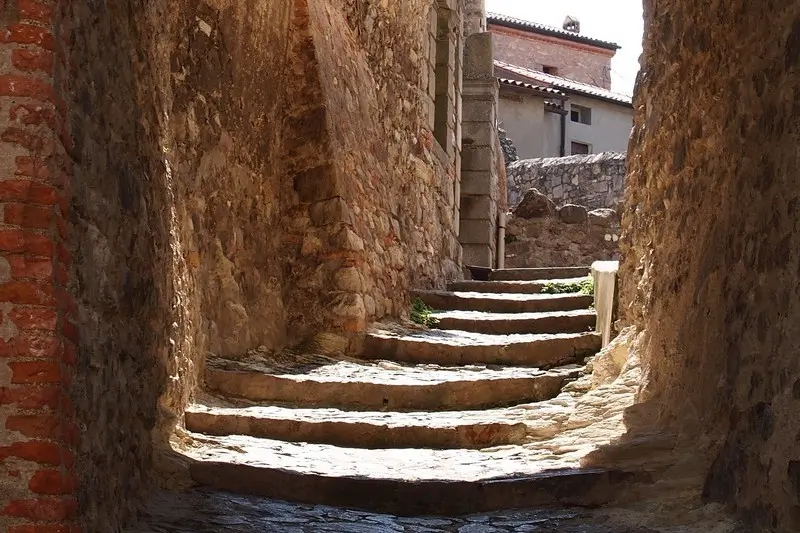Last Updated on 11/08/2023
Arqua Petrarca is one of the “most picturesque villages in Italy”. Perhaps you have already met this name. This is done in different countries, introducing the title of the most picturesque, most floral, etc. villages and towns. In order to distract tourists from the well-trodden places towards no less interesting, but small and remaining in the shade. It is assumed that these villages are distinguished by their identity, historical appearance, preservation of local traditions and local products.
Euganean Hills. What to visit
What to see in Padua
Around Venice. Villa Pisani and other Brenta Villas
Around Venice and Lido di Jesolo. Map of attractions
Lido di Jesolo map, beach and what to do
Venice. 1. Orientation, museums
Venice. 2. San Marco
Venice. 3. Grand Canal, around the city, regatta
Villages that meet the requirements of the organizers are presented on the website www.borghitalia.it. I would not say that they are all stunning. But if you want to see something relatively unspoiled, to turn off the wide path, then this site will help a lot. A similar project, which concerns not villages, but already small towns, which has not yet been promoted as much, is called the “orange flag” – www.bestsmalltownsitaly.com.
How to get to Arqua Petrarca
Arqua Petrarca is most likely to get to if you are accomodating near Padua / Venice. Or, like us, you travel from one region to another.
By public transport it can be reached from Padua or Este (bus 3548 Pa
By public transport it can be reached from Padua or Este (bus 3548 Padova – Este via Abano Terme, Montegrotto Terme, Valsanzibio). From Monselice – with a transfer in Este, at least that’s what the site says http://ro.autobus.it.
Paid parking is located below, under the church, there is a sign to it (via Fontana). But there is also a second parking – at the top of the village (via Ventolone).
Of course, I would love to visit not only this village, but also the nearby gardens of Valsanzibio, and Monselice, and the Catayo castle, and everything that is described on my website in the “Euganean Hills. What to visit”.
But – the castle is open very rarely, there is a siesta in the gardens at lunchtime, and in general it was just hot, and the road from Bibione to Lido Adriano was not the closest. In Italy you should not too much planen.
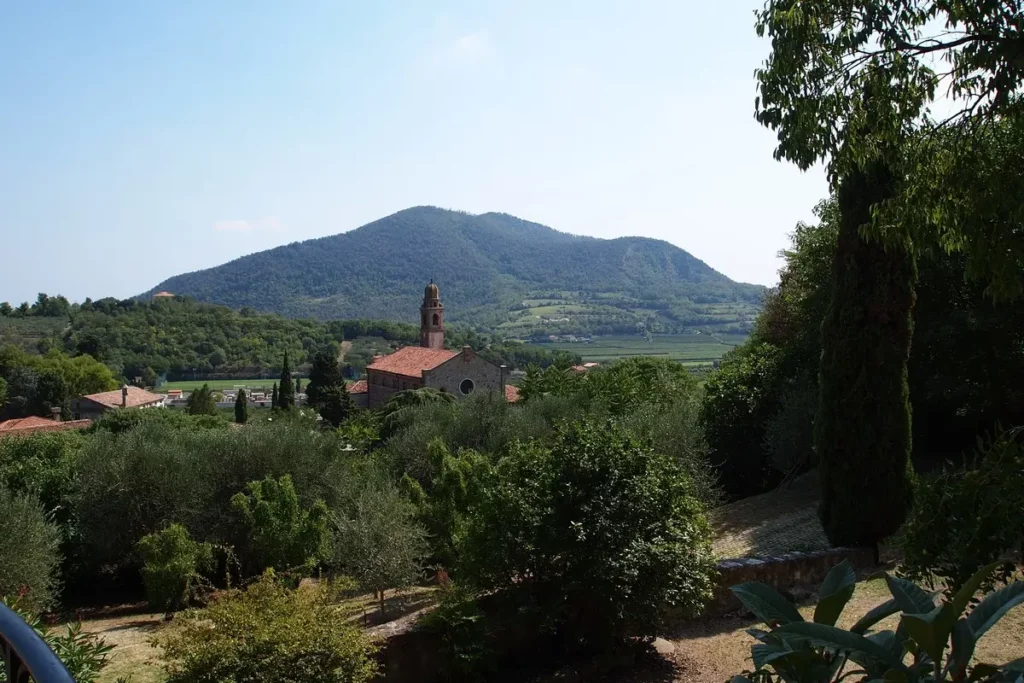
On the way to Arqua Petrarca
The Battaglia Canal, like Brenta two years earlier, turned out to be a brown unattractive narrow ditch. The width of the road does not seem to have changed since the time of the Romans, the surface since the Renaissance. Old houses, here and there ruins in the fields, so often found in Veneto.
The bulky castle of Catayo was unapproachably locked. From fields with rare groups of trees, in which houses were hidden, wooded hills grew. After driving along a narrow winding road at the foot of one of them, we ended up in Arqua.
The village is located on a slope, from below, the church draws attention first of all. The rest of the buildings are lost among the bushes and low trees.
Church
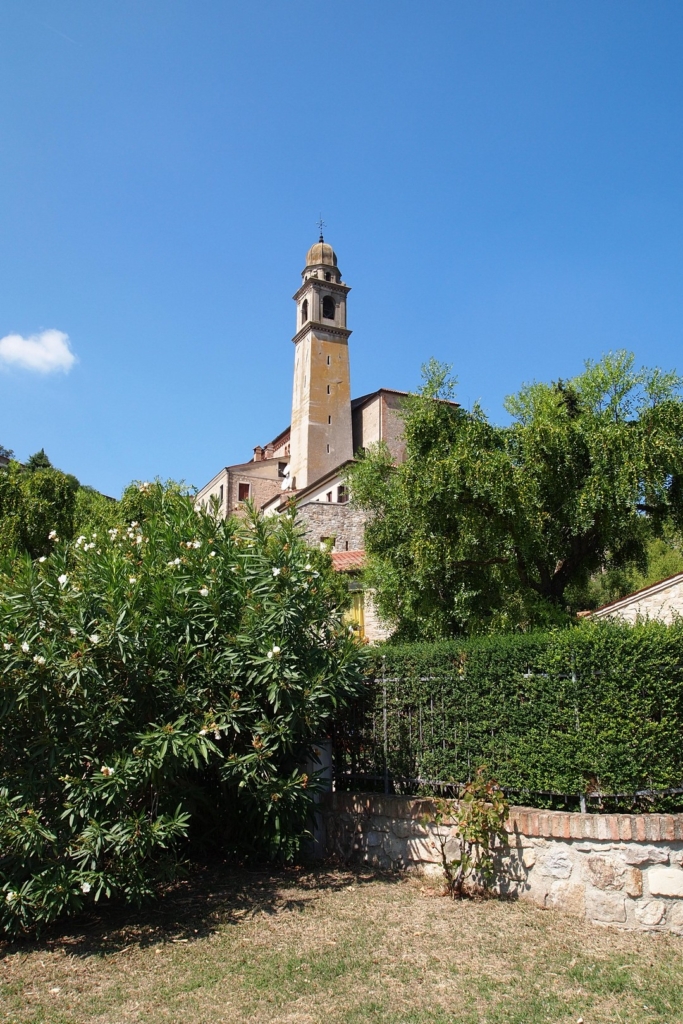
The Church of Santa Maria Assunta was first mentioned in documents from the beginning of the 11th century, but it is considered more ancient. Such a “simple” village church: a wooden ceiling, whitewashed walls, frescoes of the 12th, 13th, 15th centuries, an icon of the 11th century. In other countries it would be important ancient attraction.
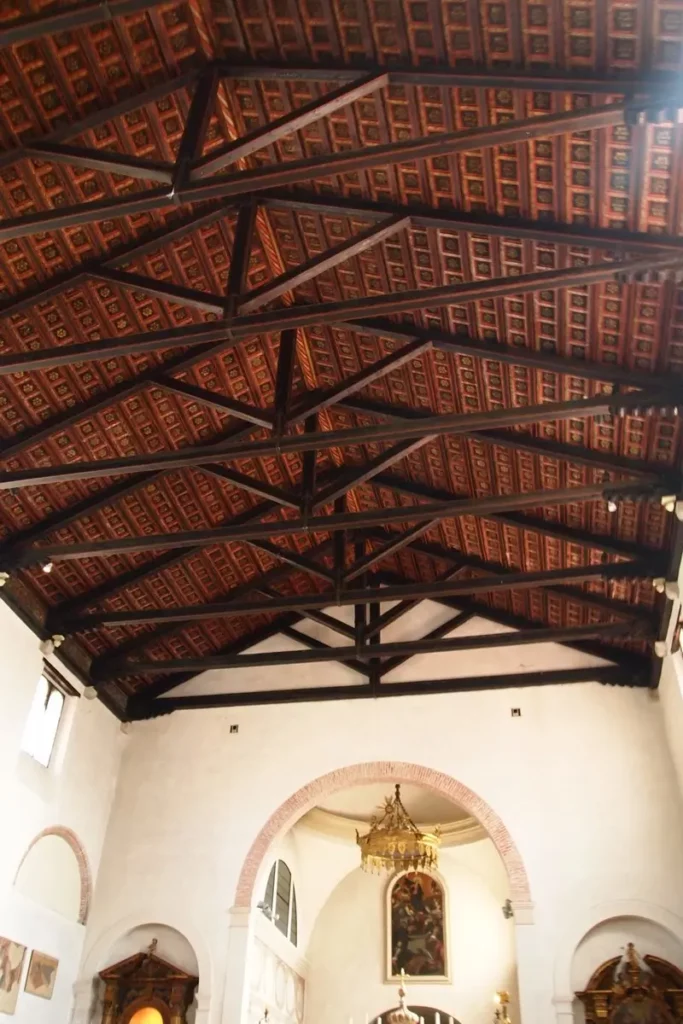
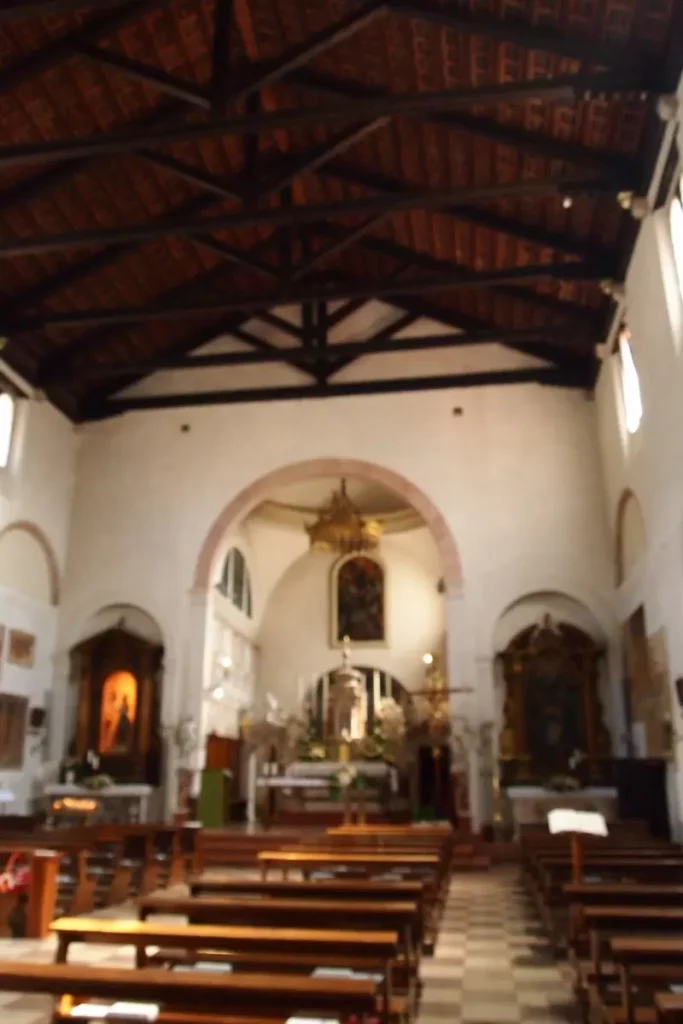
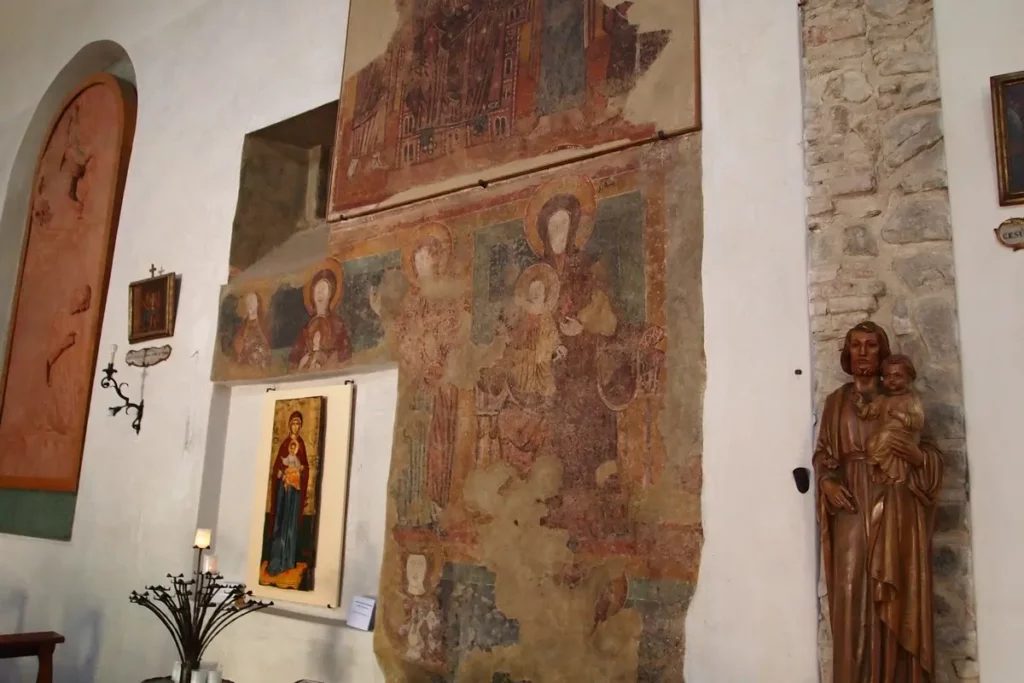

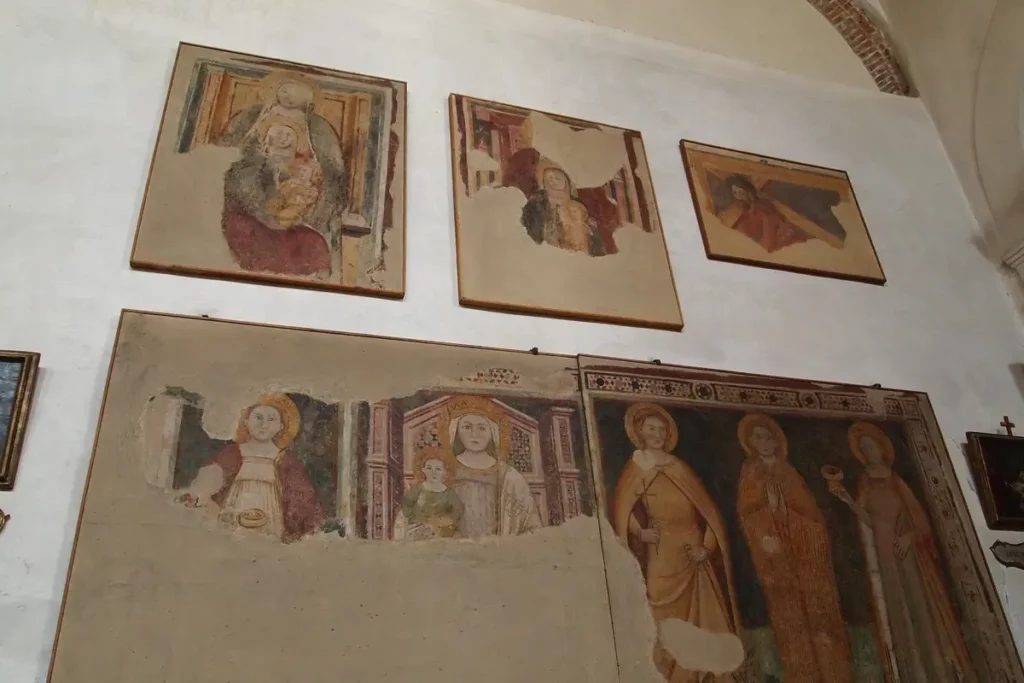
Judging by the frequent wedding photos from Arqua Petrarca on the Internet, locals love to celebrate weddings here. One such was just seen: festively dressed ladies waddled painfully on high heels over the stones down to the parking lot.
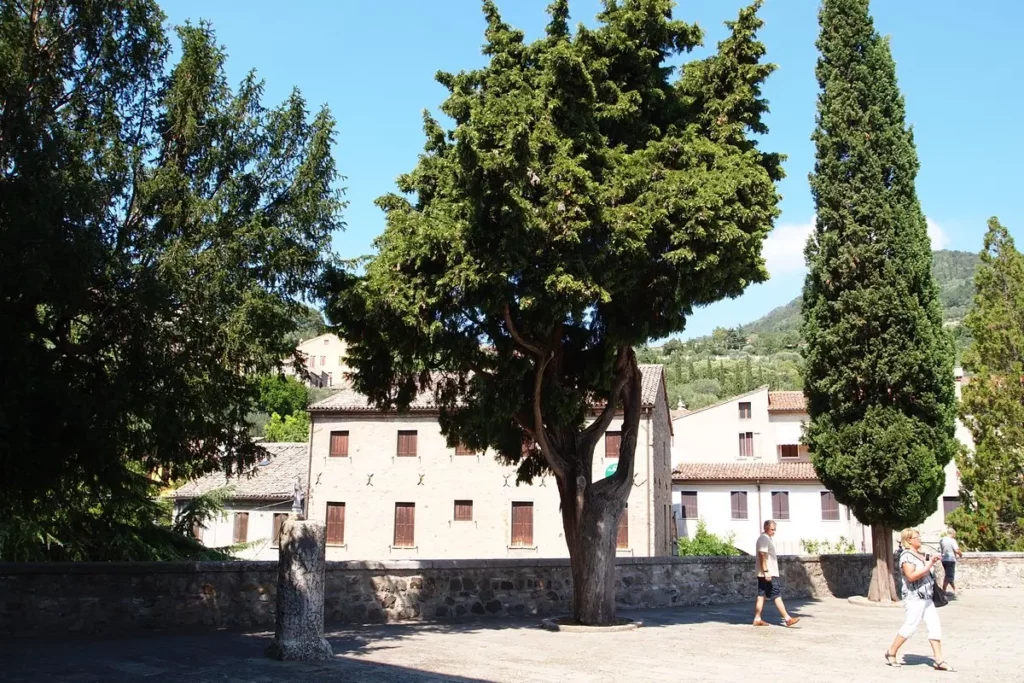
Petrarca was attached to Arqua, of course, for a reason: the poet lived here in his last years and is buried here. The sarcophagus on the right in the panorama.

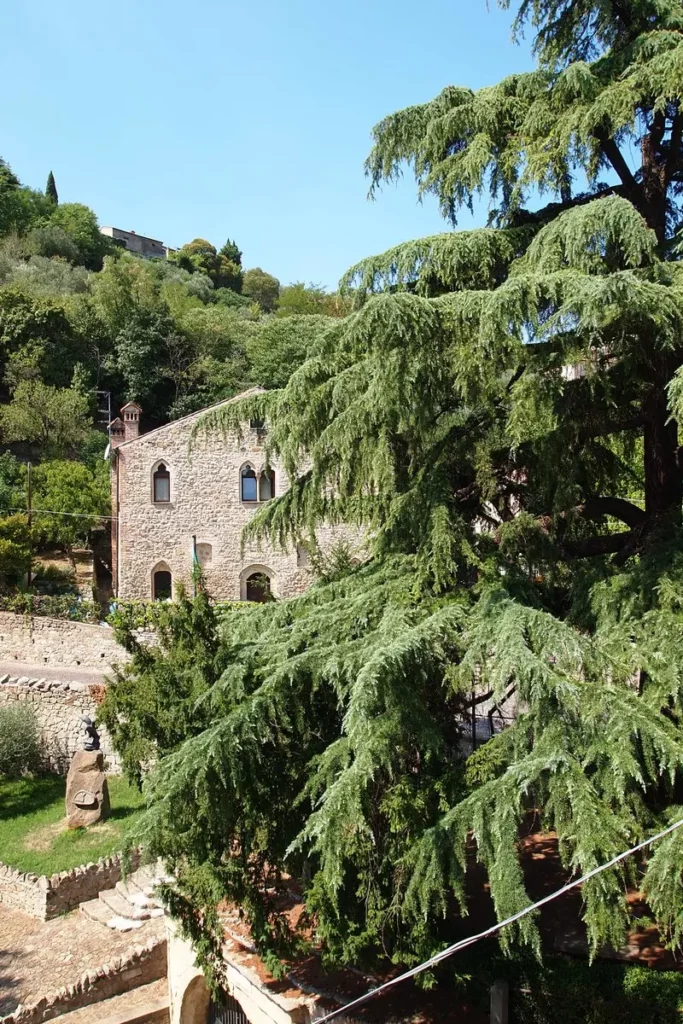

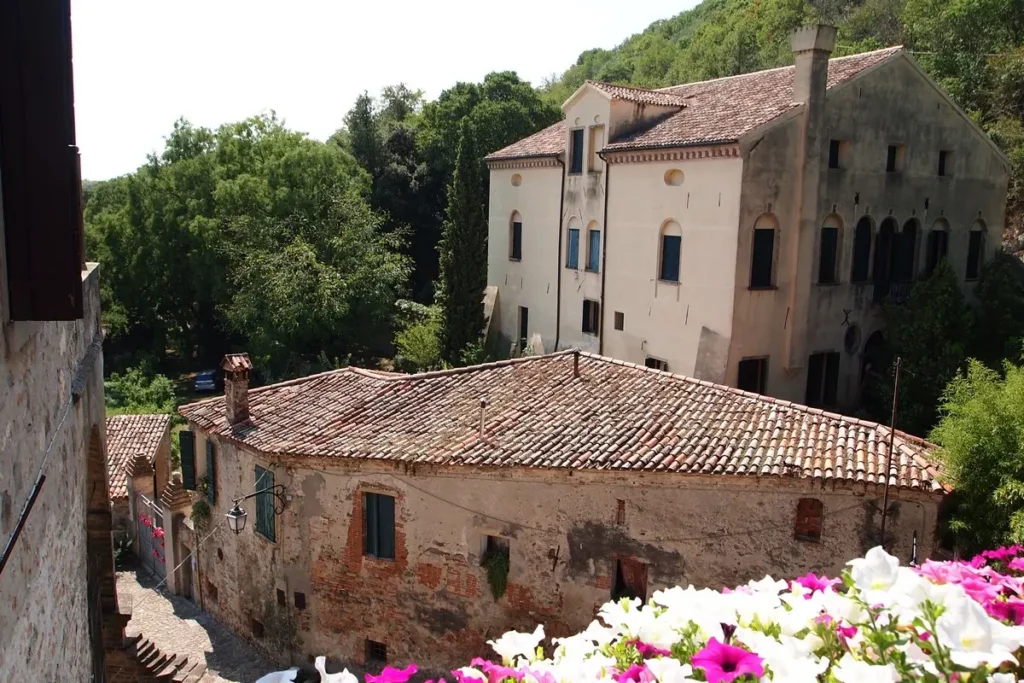
The church itself is difficult to photograph against the almost direct sun.

We go further. In fact, you can only go up – along two narrow roads to the upper half of the village. The whole village can be seen in an hour. I will not bore you with listing what was built when – it is not too important here.
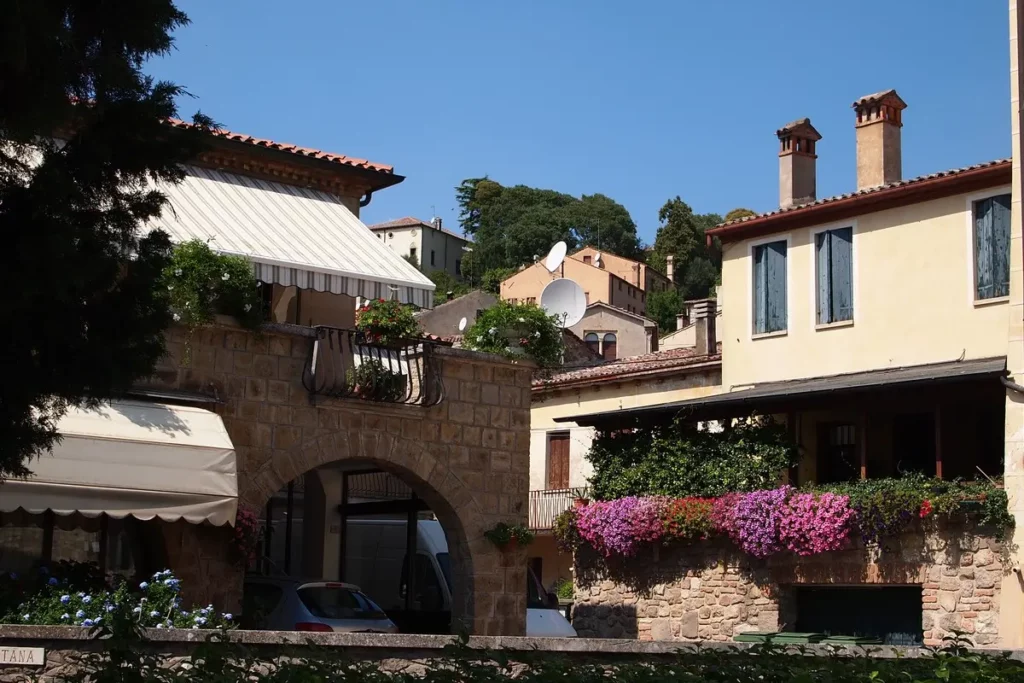
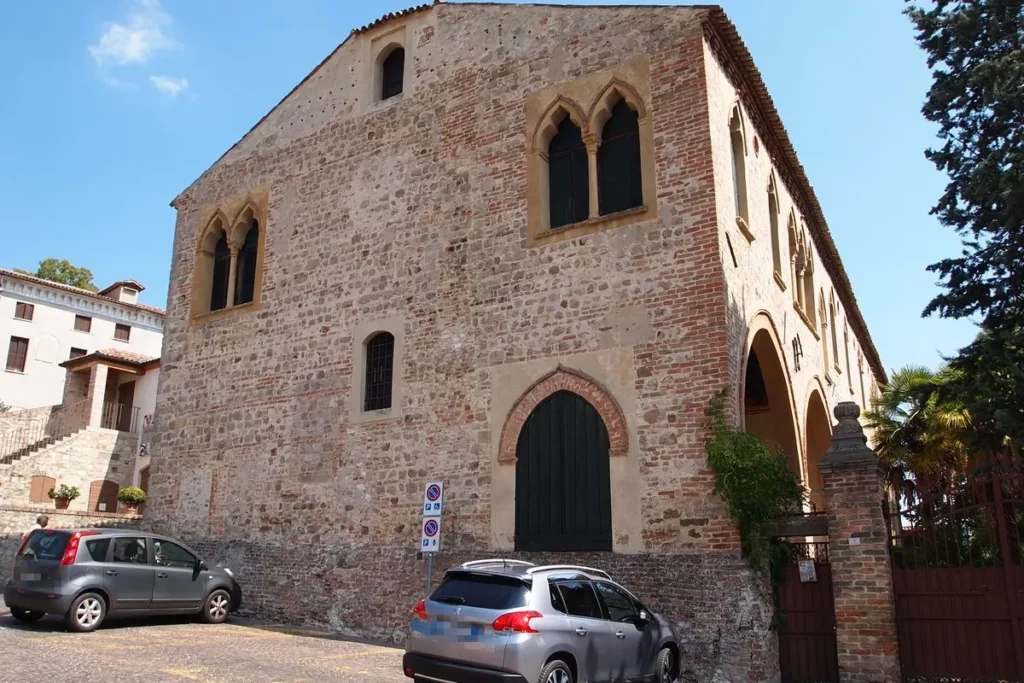
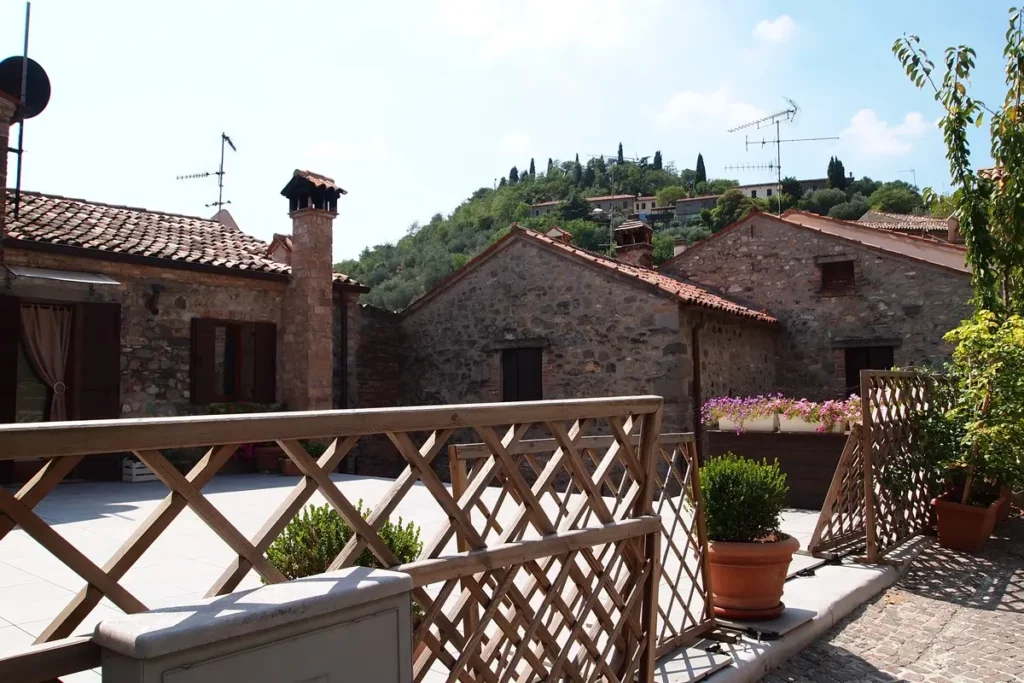


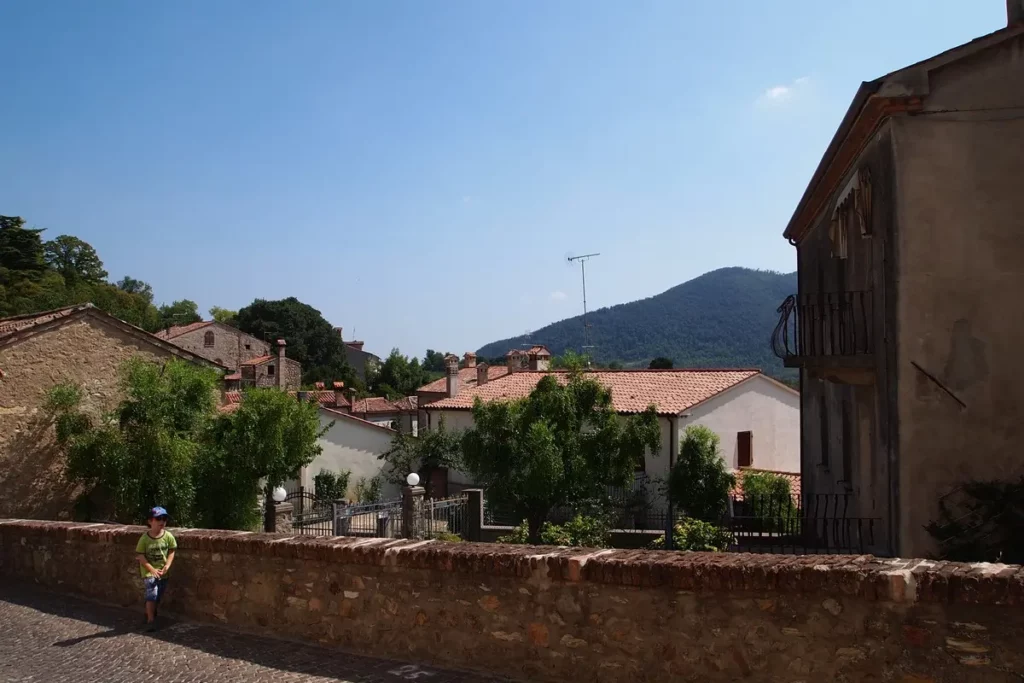
Follow me
This is how pomegranates grow.
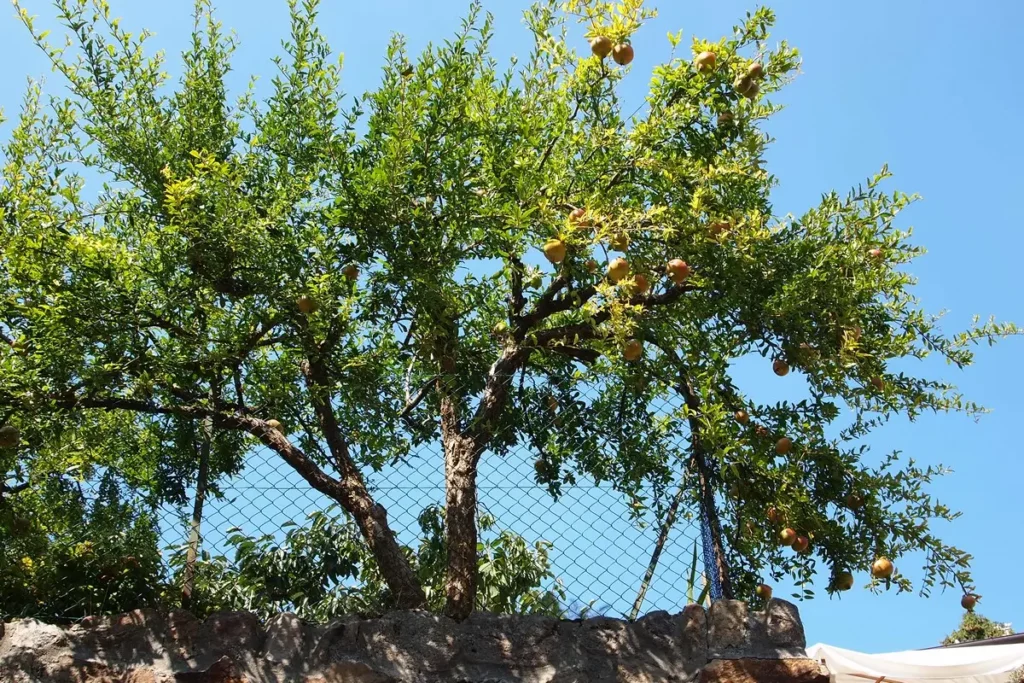
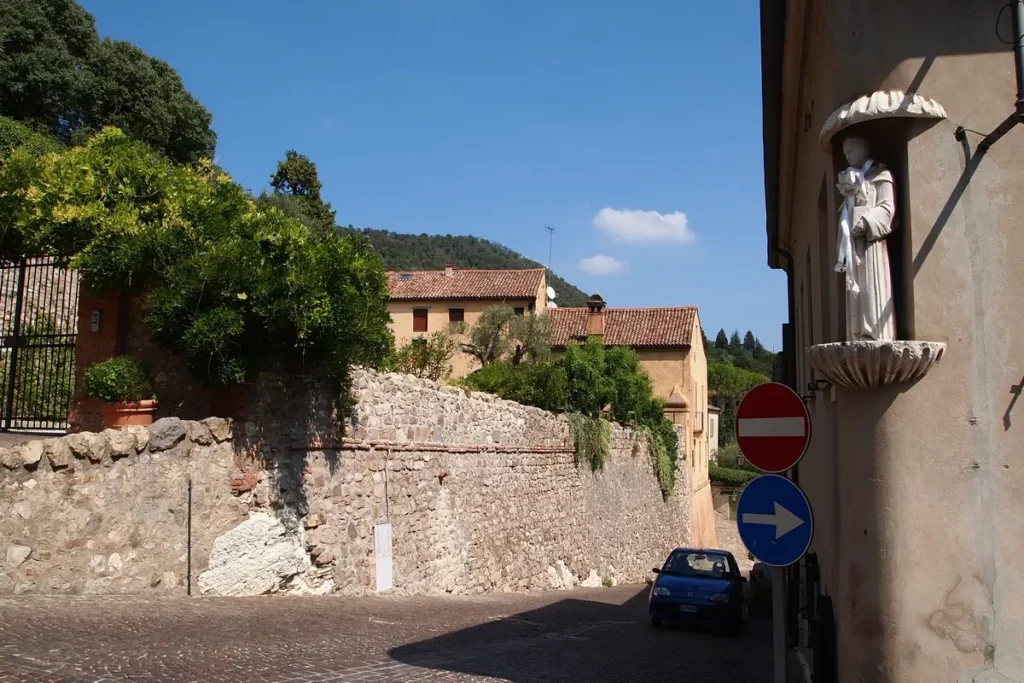
The upper part of the village
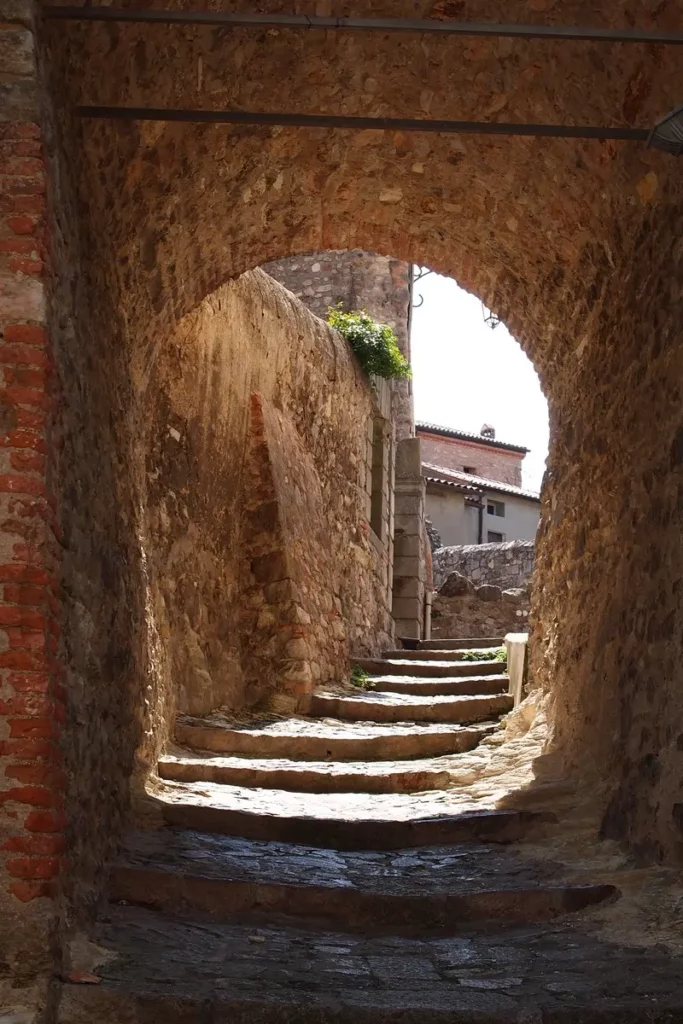
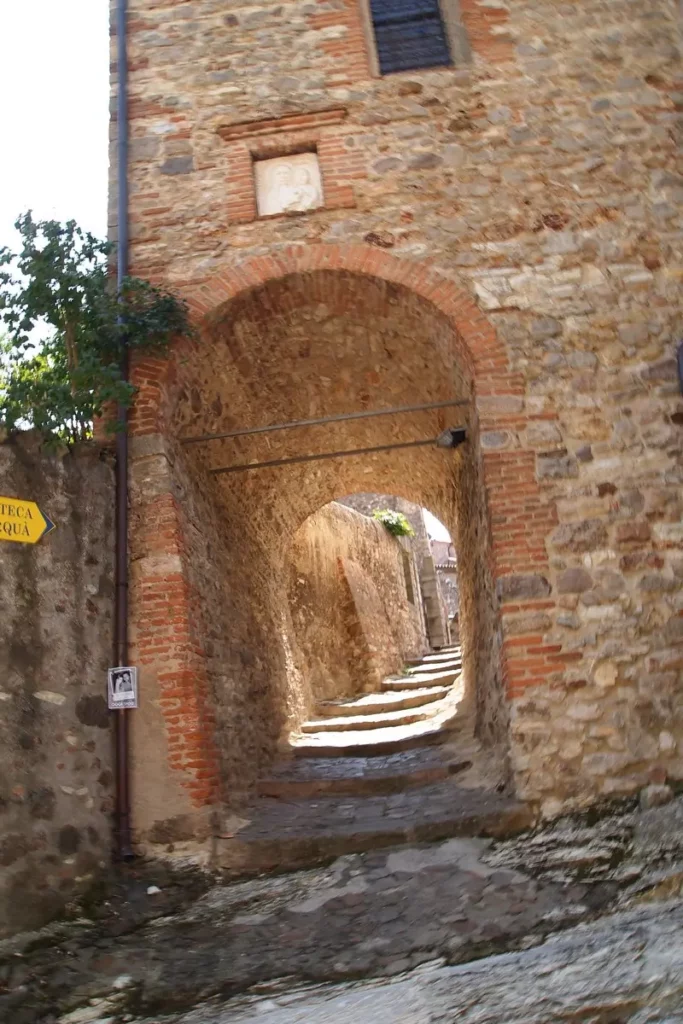

You can climb the top of the hill, but there is nothing interesting

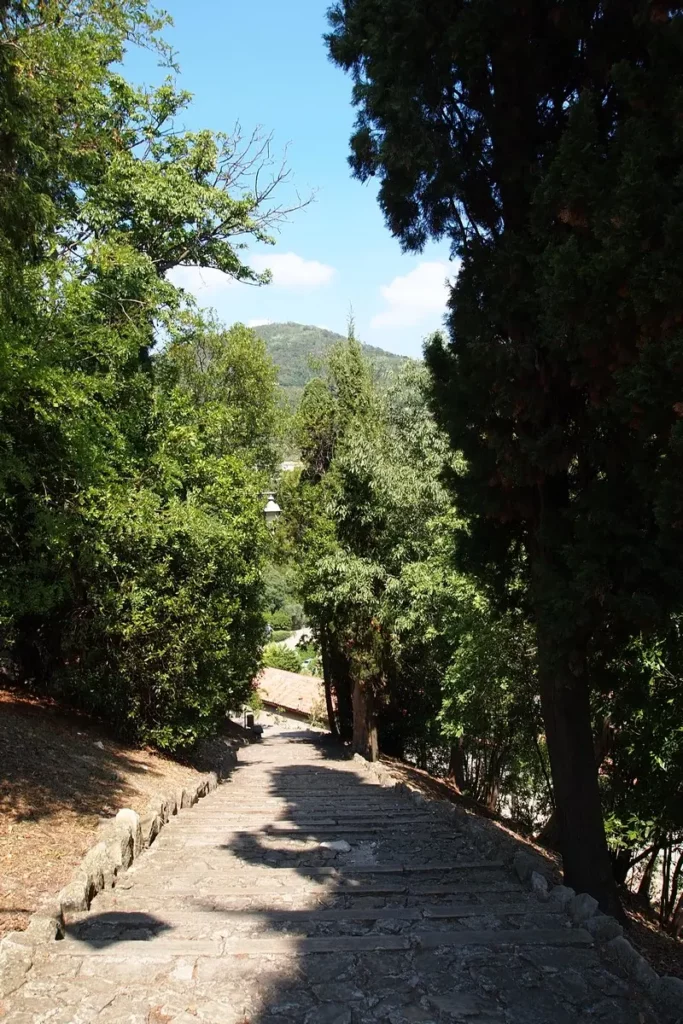
In the square

View to the other side of the hill.

The street where Petrarch lived.
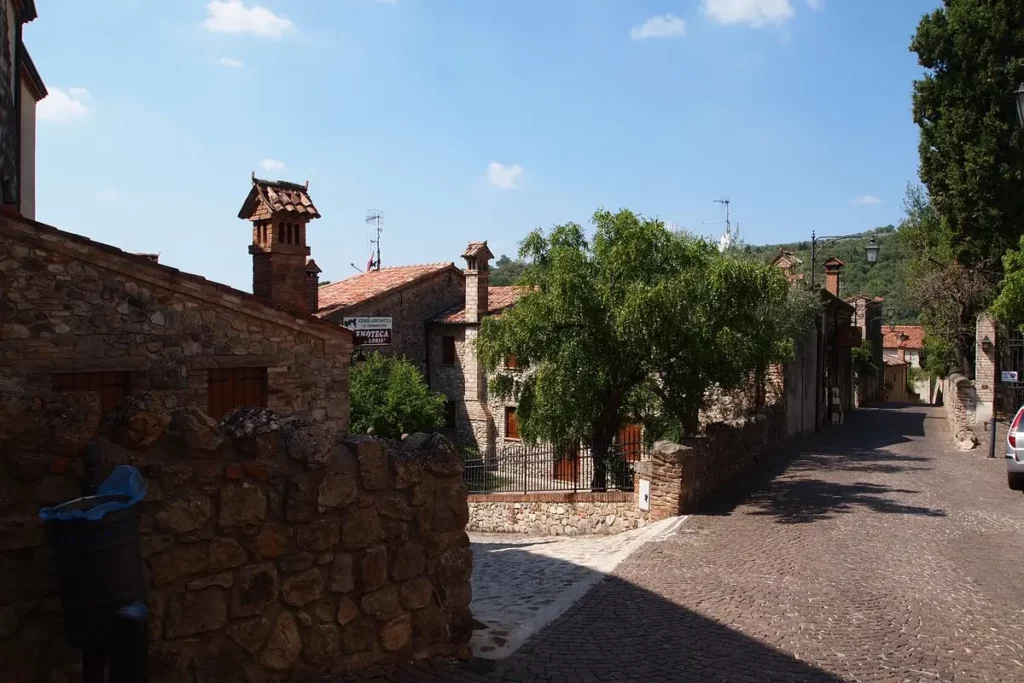
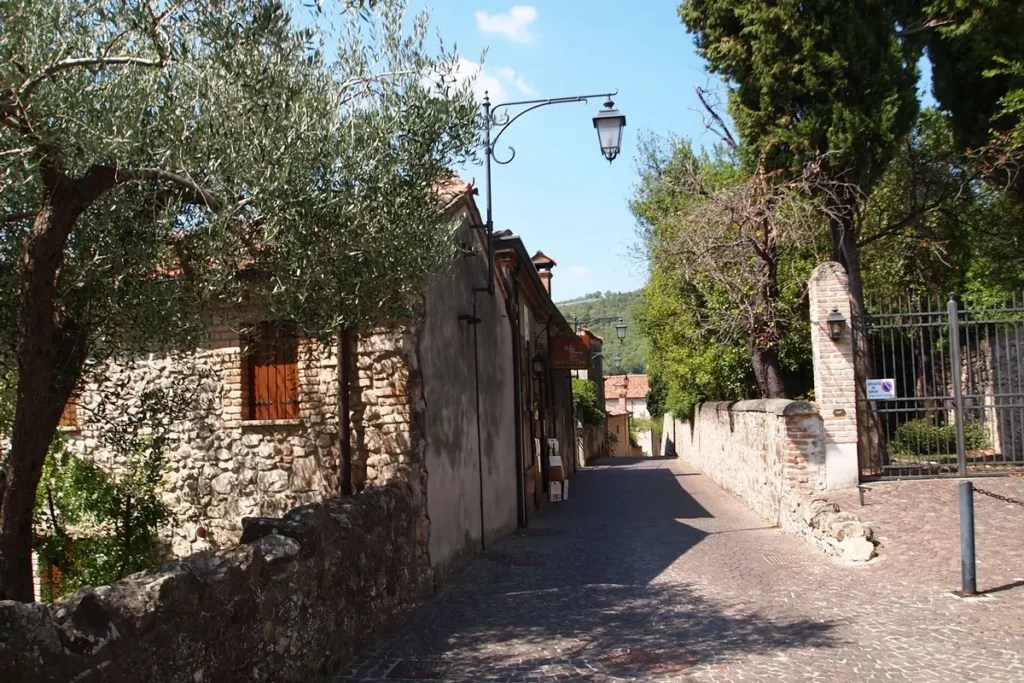
Petrarch’s house is, of course, closed for siesta.
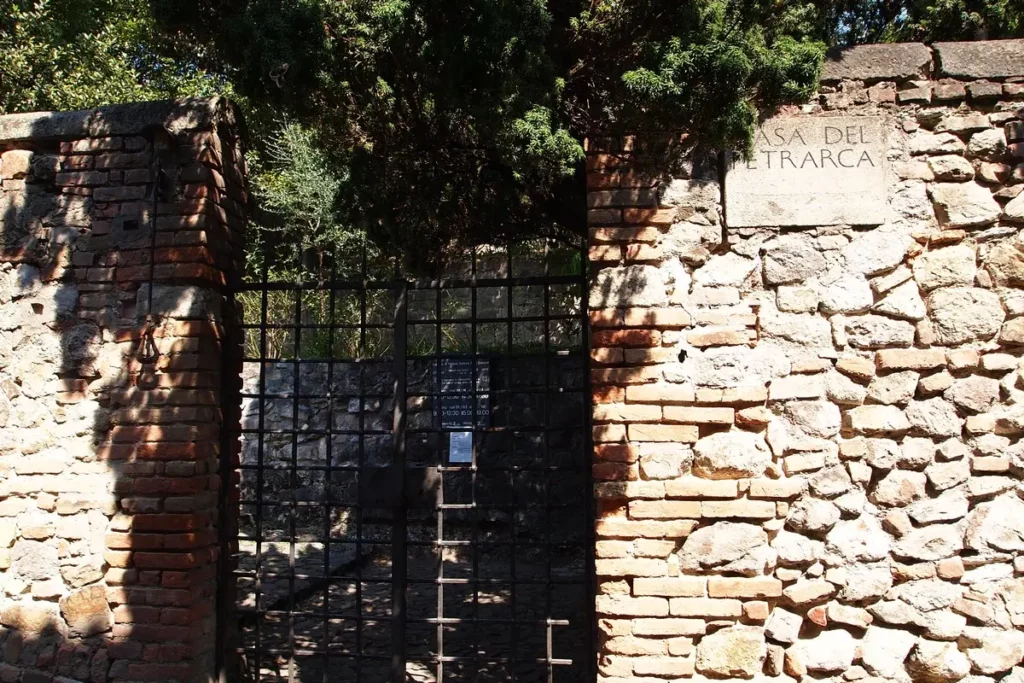
As stated in the description, the second floor features a Petrarch chair and a bookcase. The walls are painted with frescoes on the themes of the works of Petrarch – this was done under the subsequent owner of the house (in the middle of the 16th century). Exhibitions are held on the ground floor.
That’s all, you can go down. The wedding took place again – the bride was in an old tiny fiat with cans tied to the bumper.
By the way, if you expect to eat something very local at a local restaurant. There are two restaurants upstairs, two restaurants and a snack bar downstairs. During the day they are closed, i.e. you must be in time before half past one. Languages do not understand, or practically do not understand, which is very authentic. Only quickly, quickly repeat the same thing in Italian. But coperto (service) they take appropriate to the authenticity – for two adults / two children it came out as much as 8 euros. Italian dictionary not forget.
More about Padua.
Euganean Hills
Other attractions of the region of Venice on the map
All topics by region – #Venice
Genießen Sie die Seite ohne Cookies? Das bedeutet, dass ich für Sie auf eigene Kosten arbeite.
Vielleicht möchten Sie meine Arbeit hier unterstützen.
Oder hier Ihre Cookie-Einstellungen ändern.

